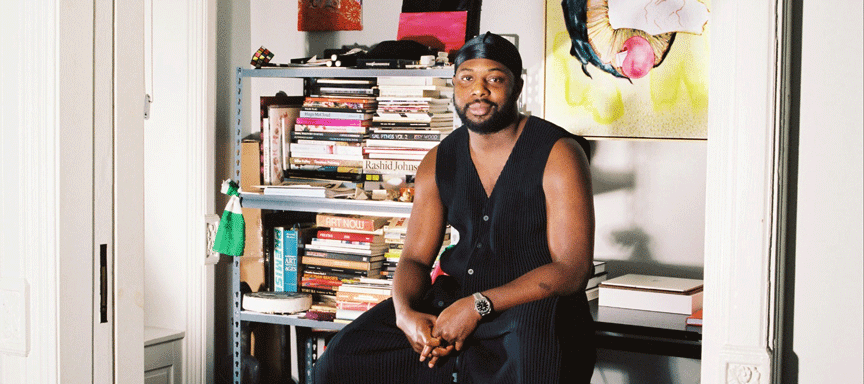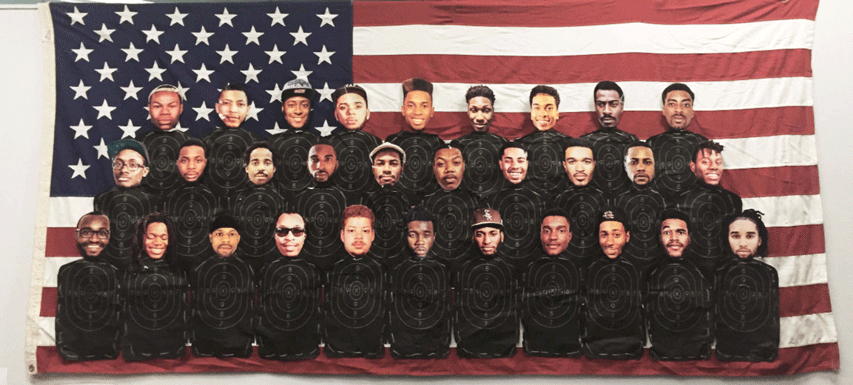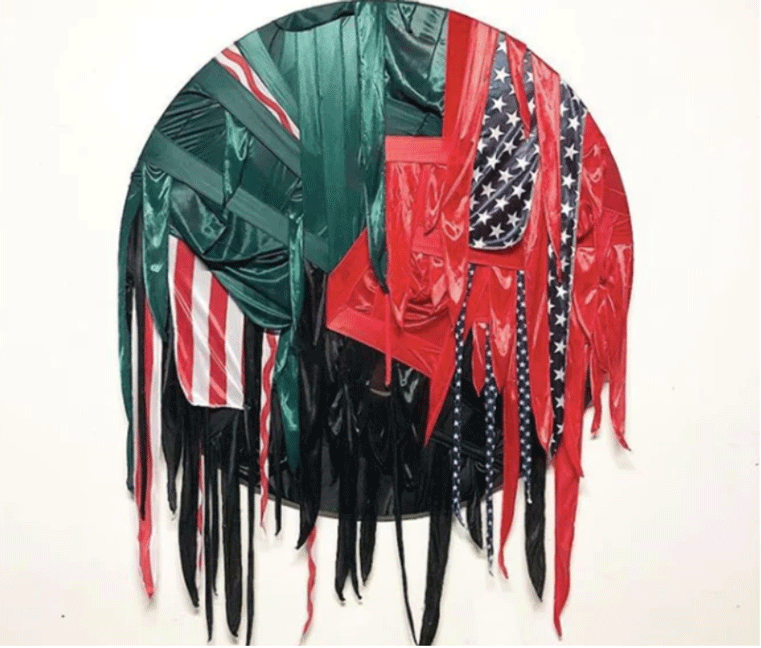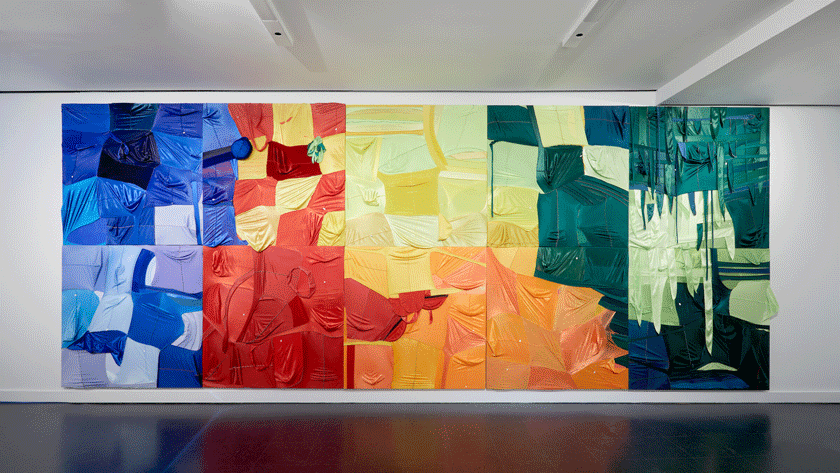On May 24, 2022, nineteen students and two teachers were fatally shot and seventeen were wounded at Robb Elementary School in Uvalde, Texas, United States. Sadly, this tragedy is not an isolated event. According to a database from Education Week, there have been 27 school shootings in the US this past year alone. Some artists have been working to draw attention to this issue long before the most recent incident, and some artists have been victims of gun violence themselves.
Anthony “Bunmi” Akinbola is an artist from Columbia, Missouri, whose parents were immigrants from Nigeria. They were shop owners and managed a local arts nonprofit, providing Akinbola with early exposure to art and creative imagery. Akinbola recalls an early memory of looking at Picasso monographs in the shop and realized how these images and shapes could be reconfigured and expanded into the visual commentary. As a child, he also made his own toys from materials found in his garage, an influence that Akinbola has continued to incorporate in his artworks and series.
From his studio in Brooklyn, Akinbola often makes use of ready-made and found items in his exploration of different themes such as culture, connections and identity. Also included in his multidisciplinary creative works are topics that he has researched and that reflect both symbolism and self-discovery topics—such as durags, torino brushes and palm oil. The artist has also created artworks from personal experiences, such as Target Practice (2015), which was the artist’s exploration of his perspective on gun violence after he was a victim of such an event.

Target Practice was a collage piece from 2015 where the artist stitched portraits of his Black friends on top of an American flag, with shooting target lines on each of their bodies. Akinbola had interviewed each person and included audio where they spoke of their experience being Black in America. This piece was completed by Akinbola a few years after he was a victim of gun violence himself. The inspiration for this collage was the exploration of Akinbola’s own perspective on gun violence and a deeper understanding and acceptance of his Black American identity.
As Akinbola felt more accepted as an American, rather than a child of African immigrants, references and inspirations related to his Blackness, critical race theory, violence, and other topics began to be explored in his work. Themes of the commodification of Black culture, relationship between Africa and Black America through objects, and the transformation of ready-made objects that are significant to the Black community and culture began to emerge in conjunction with other layers of self-discovery and identity on what makes an object “Black” and what makes him “Black”.
Akinbola speaks on the topic of Black culture in an interview with Office Magazine where he writes, “American culture has become the dominant culture and within that, Black American culture has become the most popular, then it’s really just ‘Black Culture’ that's the global culture. It becomes difficult for me because, with the advent of Black Culture, there is this demonization of these same things being idolized . . . This notion of Black culture being subjected to the capitalist structure is a theme I’m continuing to explore.”

Every material Akinbola uses plays a specific role in his intentions and is well-researched. Akinbola emphasizes the importance of understanding the history of the object and how that relates to conversations around accessibility and respectability.
For example, durags are a ready-made material Akinbola uses in his art. The artist discusses the cultural influence relating to durags, a fabric hair covering used to maintain or protect Black hair. Akinbola mentions the history of durags by expressing how they once used to make Black people appear non-threatening but we now see the reverse occurring in society. After using hundreds of durags for what he thought would be a one-off piece at the Queens Museum in 2018, he developed his own style of art that uses the infinite colors and textures of durags to mimic the strokes of a paintbrush.
Another material used in Akinbola's artwork is palm oil. Palm oil is used to evoke the calamity of the pandemic, a motif he said was “vague enough to be meaningful.”

Akinbola currently works in Brooklyn where he explores a wide range of concepts, taking inspiration from other African and Black American artists including Jean Michel Basquiat, and the social influence of artists such as Glenn O’Brien.
Akinbola was selected for the Anderson Ranch Art Center Residency in 2017, was awarded the Van Lier Fellowship in 2019, and was an artist in residence at Galerie Krinzinger, Vienna in 2020. He has been featured in exhibitions at The Queens Museum, NY, Pace Gallery, NY, The Zuckerman Museum of Art, GA, Night Gallery, CA, Carbon12, UAE, and The Verbeke Foundation, Belgium, among others. Akinbola’s first-ever solo gallery presentation titled Fire by Force was presented at FALSE FLAG, displaying his multilayered and transformative works of art—his durag artwork, hairbrushes and palm oil. Art that explores consumption, respectability and the commodification of Black culture.
Akinbola’s attention to racial inequality highlights the United Nations Sustainable Development Goal for Reduced Inequalities, which can be seen through his commentary art on durags along with his exhibit Target Practice. His work also covers gun violence and African immigration, echoing Peace, Justice and Strong Institutions. Akinbolas' research and use of palm oil are additionally meant to underline the extensive land clearance, and production of fire and smoke caused by palm oil, demonstrating its effects on the climate and animals, in line with the goal for Life on Land.

To help support victims of gun violence, Sandy Hook Promise is an organization accepting donations to help spread awareness, prevent tragedies and aid in trauma following a shooting. Additionally, Greenpeace accepts donations to help mitigate the effects on Indonesian forests which are being destroyed to clear the way for palm oil.
To see more of Anthony “Bunmi” Akinbola’s artwork as this artist continues to make an impact in the art world, visit his Instagram at @heyitsbunmi.
